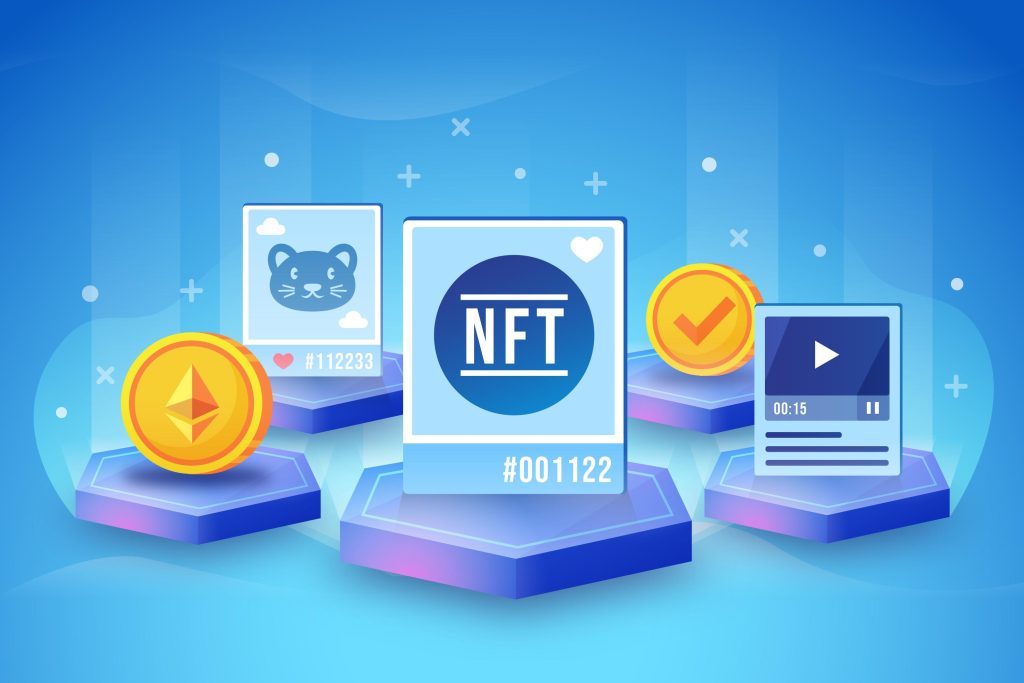
What Is An Nft
Table of Contents
Step into the captivating world of digital ownership, where virtual assets take on a whole new meaning. Have you heard the buzz about NFTs? If not, prepare to be astounded by the revolutionary concept that is sweeping across industries like a wildfire! Non-fungible tokens (NFTs) have taken the art world, and beyond, by storm with their ability to authenticate and prove ownership of unique digital items. But what exactly are NFTs? How do they differ from cryptocurrencies? And why are they causing such a stir in the realm of creativity? In this blog post, we will delve deep into the fascinating universe of NFTs, exploring their origins, applications, challenges, controversies – and perhaps even glimpse into their promising future as potential game-changers in the art industry. Whether you’re an artist looking for new avenues or simply curious about cutting-edge technology trends – buckle up and get ready for an exhilarating journey through the mesmerizing landscape of non-fungible tokens!
Understanding the Concept of Non-fungible Tokens
In today’s digital age, non-fungible tokens, or NFTs, have been making headlines and capturing attention across various industries. But what exactly are they? Put simply, NFTs are unique digital assets that can represent ownership or proof of authenticity for a particular item or piece of content. Unlike cryptocurrencies such as Bitcoin or Ethereum, which are interchangeable units with equal value, each NFT is distinct and cannot be replicated.
One key feature of NFTs is their ability to be bought, sold, and traded on blockchain platforms. This means that artists, creators, and collectors can leverage this technology to establish verifiable ownership rights over their digital creations. Whether it’s artwork, music albums, virtual real estate in video games, or even tweets – all these items can now be tokenized as NFTs.
How NFTs are Different from Cryptocurrencies
NFTs, or non-fungible tokens, have been making waves in the digital world recently. While NFTs and cryptocurrencies may seem similar at first glance, they are actually quite different.
- Unlike cryptocurrencies such as Bitcoin or Ethereum, which are fungible and can be exchanged for one another on a like-for-like basis, NFTs are unique and indivisible. Each NFT represents a specific item or piece of content, whether it’s artwork, music, videos, virtual real estate or even tweets.
- Another key difference is that while cryptocurrencies operate on blockchain networks with decentralized ledgers to enable secure transactions without intermediaries like banks or governments involved; NFTs use blockchain technology to verify authenticity and ownership.
- In terms of utility, cryptocurrencies serve as mediums of exchange or stores of value. On the other hand, NFTs primarily function as certificates of ownership for digital assets.
Understanding how NFTs differ from cryptocurrencies is crucial in grasping their potential impact on various industries. As more people become aware of this innovative technology and its applications beyond art collectibles—such as gaming items or virtual experiences—we can expect further advancements in this exciting realm!
The Rise of NFTs in the Digital Art World
NFTs, or non-fungible tokens, have taken the art world by storm in recent years. These unique digital assets have opened up a world of possibilities for artists and collectors alike. With NFTs, artists can now tokenize their digital artworks and sell them directly to buyers on various online platforms.
- One of the key reasons behind the rise of NFTs in the digital art world is their ability to provide proof of ownership and authenticity. Each NFT is recorded on a blockchain, making it virtually impossible to counterfeit or duplicate.
- Moreover, NFTs have democratized the art market by removing many gatekeepers traditionally associated with buying and selling artwork. Artists no longer need galleries or agents to showcase their work; they can simply create an NFT, list it for sale on a marketplace, and reach potential buyers from around the globe.
- Another fascinating aspect of NFTs is that they allow for new revenue streams for artists through royalties. Unlike traditional sales where an artist only receives payment once upon selling a piece, with an NFT sale, they can earn ongoing royalties every time their artwork is resold. This provides long-term financial support for artists while also incentivizing collectors to hold onto valuable pieces.
The rise of social media has also played a significant role in popularizing NFTs within the art community. Artists can share their works on platforms like Instagram or Twitter, attracting attention from potential collectors who may be interested in purchasing an exclusive piece as an investment or as part of their collection.
Exploring Other Use Cases for NFTs
NFTs have made quite a splash in the art world, but their applications extend far beyond just digital artwork. These unique tokens have opened up a whole new realm of possibilities in various industries and sectors.
One area where NFTs are gaining traction is in the world of collectibles. From virtual trading cards to rare digital items in video games, NFTs allow people to own and trade unique digital assets like never before. Imagine owning a one-of-a-kind item from your favorite game or being able to prove the authenticity of limited-edition merchandise with an NFT.
But it doesn’t stop there. NFTs also hold great potential in the music industry. Artists can tokenize their music, giving fans exclusive access and ownership rights to songs or albums. This opens up exciting opportunities for artists to monetize their work directly without relying solely on traditional distribution channels.
Even real estate could be revolutionized by NFTs. Tokenizing properties would make buying, selling, and investing more accessible and secure than ever before. Imagine fractional ownership of high-value properties or seamless property transfers through blockchain technology – all made possible by NFTs.
NFTs also have implications for intellectual property rights and licensing agreements. With these tokens, creators can establish verifiable ownership over their digital creations while allowing others to license them under specific conditions.
The Future of NFTs and Potential Impact on the Art Industry
NFTs have already made a significant impact in the art world, but their influence is far from reaching its peak. As technology continues to advance and more people become aware of this digital phenomenon, we can expect NFTs to shape the future of the art industry.
- One potential outcome is a democratization of art ownership. Traditionally, only wealthy collectors had access to valuable works of art. However, with NFTs, anyone can own a piece of digital artwork and participate in this exclusive market. This shift has the potential to break down barriers and give artists more control over their work.
- Another exciting prospect is enhanced artist royalties. With traditional artwork sales, artists often miss out on subsequent sales as their work changes hands multiple times. But with NFTs programmed with smart contracts, artists can receive royalties every time their artwork gets resold – ensuring they benefit from the increased value over time.
- Additionally, NFTs open up new avenues for collaboration between artists and creators across different mediums. Through tokenization, musicians can sell limited edition tracks or albums as unique digital assets while photographers can auction off exclusive rights to their photographs.
Also Read: NFT Creation Costs: What You Need to Know Before Jumping In
Conclusion
As we have delved into the world of NFTs, it is evident that these non-fungible tokens are revolutionizing the art industry and beyond. They represent a new way for creators to monetize their digital works and for collectors to own exclusive pieces in a decentralized manner.
The future of NFTs holds exciting prospects for both creators and collectors alike. It will reshape how we perceive art ownership while opening up new avenues for creativity in the digital realm. So whether you’re an artist looking to showcase your talents or an enthusiast eager to support emerging creators – keep an eye on the evolving world of non-fungible tokens!

